
The Armenian Ministry of Health claims that the statistics of the World Health Organization on excess deaths from coronavirus in the republic are exaggerated, they include deaths recorded as a result of the escalation of the conflict in Nagorno-Karabakh in the fall of 2020. "WHO data on excess mortality from COVID-19 in Armenia are exaggerated. On behalf of the Minister of Health Anahit Avanesyan, these data were analyzed... It turned out that in the report of the technical working group studying mortality from coronavirus, the statistics of excess mortality for the first two years of the pandemic included deaths recorded as a result of the 44-day war. In addition, it is noted that the experts used preliminary data for 2020-2021, which differ from the final ones. In this regard, the Ministry of Health will contact the WHO, demanding additional comments and revision of the published analysis," the report says.
Faktyoxla Lab. has tried to figure out whether the allegations of the Armenian Ministry of Health were justified.

To begin with, according to the latest data, which was announced on April 13 this year by Prime Minister Nikol Pashinyan in the Armenian Parliament, a total of 3,825 people died on the Armenian side in the second Karabakh war. According to other sources, more than 5,000 people died there.
Further, according to the latest data from the Armenian media, from May 4 to May 10, the total number of people infected with coronavirus in Armenia was 422,900, 412,050 people recovered, 8,623 died, according to the Armenian Ministry of Health. Some 544 patients are being treated in hospitals. During the week, 11,538 tests for coronavirus were carried out, 26 new cases of infection were confirmed, 31 people recovered, 1 person died. In total, 3,069,240 coronavirus tests have been carried out.
Now let’s see what excess mortality is.
Excess mortality associated with the COVID-19 pandemic is used to quantify the direct and indirect impacts of the pandemic. Excess mortality is defined as the difference between the total number of deaths estimated for a specific place and given time period and the number that would have been expected in the absence of a crisis (e.g., COVID-19 pandemic). This difference is assumed to include deaths attributable directly to COVID-19 as well as deaths indirectly associated with COVID-19 through impacts on health systems and society, minus any deaths that would have occurred under normal circumstances but were averted due to pandemic-related changes in social conditions and personal behaviors.
Estimates of the excess mortality associated with the COVID-19 pandemic includes deaths from all causes. In certain locations, these estimates may include excess deaths associated with other crises such as extreme weather, disasters, or conflicts.
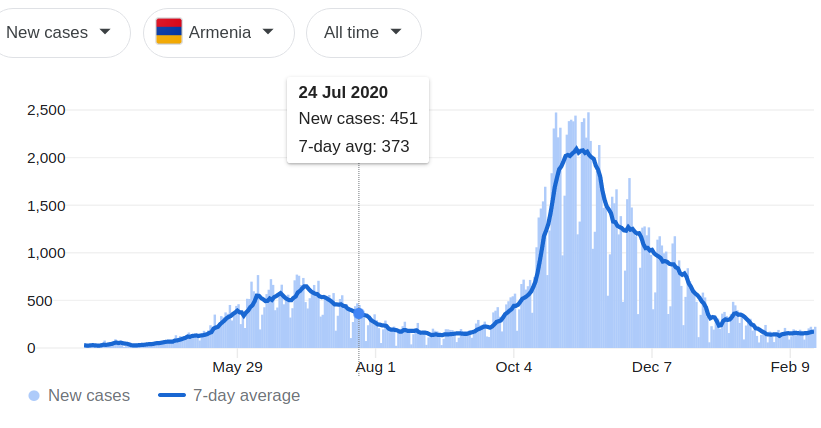
Negative excess deaths could be observed if deaths that would have happened in the absence of the pandemic were averted due to measures taken to deal with the pandemic. Some public health measures (e.g., lockdown, social distancing, mask wearing, working from home) have led to decrease in the number of deaths from causes other than COVID-19. For instance, a decreased number of deaths due to road traffic injuries and seasonal flu has been observed due to restricted movement of people.
It is important to note that other groups and countries have produced excess death estimates. The difference in the estimates produced by WHO and those produced by other groups are due to key differences in the input data used and assumptions made including how the expected deaths are calculated, the statistical model used, and the variables used to predict deaths in locations where limited or no data is available. There might also be variations of the period/month/week assessed. To minimize these differences, uncertainty intervals are provided.
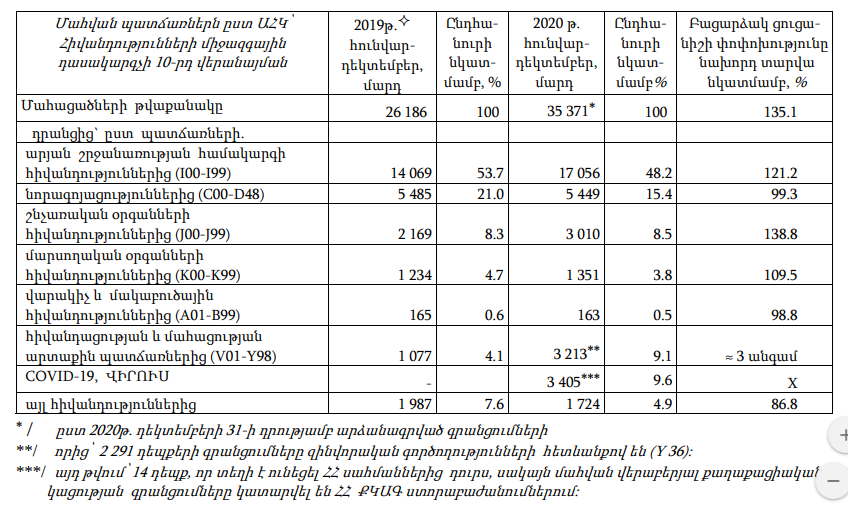
So, according to the latest data from the Armenian media, from May 4 to May 10, the total number of people infected with coronavirus in Armenia was 422,900, 412,050 people recovered, 8,623 died. According to the Armenian Ministry of Health, 544 patients are being treated in hospitals.
During the week, 11,538 tests for coronavirus were carried out, 26 new cases of infection were confirmed, 31 people recovered, 1 person died. In total, 3,069,240 coronavirus tests have been carried out.
What happened in Armenia when the coronavirus pandemic began? Here is what, in particular, the Armenian journalist Hrant Mikaelyan writes in early June 2020: “The virus has already begun to pose a demographic threat to the country... Unfortunately, Armenia found itself in a very difficult condition as a result of the “corona” crisis. The time that was before the start of the epidemic in Armenia was not used effectively. It was necessary to purchase the necessary items and equipment, create effective advisory councils to develop mechanisms to counter the crisis and make decisions, etc... The unstable and unconsolidated voice of power was not accepted by society, and the communication vacuum was quickly filled with unverified reports and conspiracy theories. Instead, the authorities were engaged in domestic politics, going as far as making radical statements and splitting society along ideological and other lines. Actually, because of this, time was lost. The internal conflict is exacerbated to the limit, and communication with society is largely lost. As a result, society itself was declared responsible for everything. The weakening of the police over the past years (starting with the Sasna Tsrer rebellion) and the lack of political will have led to the fact that the quarantine regime was not observed. As a result, Armenia suffered all the economic losses, but did not receive any benefit in terms of containing the epidemic.”
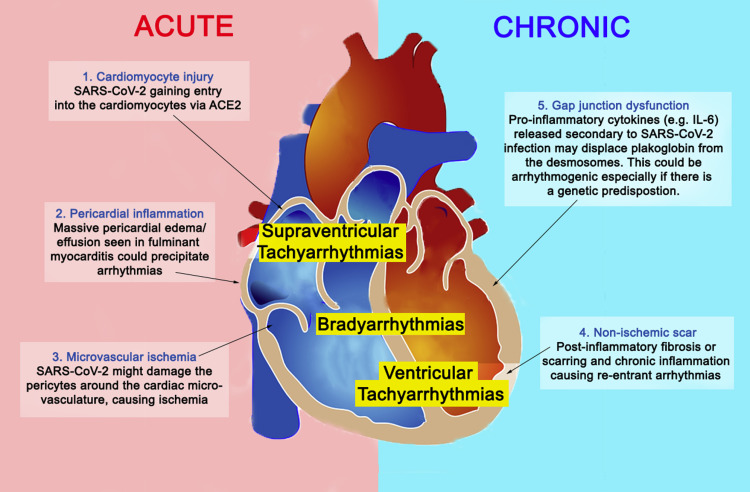
According to the Armenian journalist, at the initial stage, the healthcare system coped with tracing the contacts of the infected and isolating them. "It seems that there was potential for curbing the pandemic on the territory of Armenia, but it was not used. Today, the main hopes are placed on the weather and wearing masks. However, there is no certainty that this is enough. Unfortunately, due to the lack of a timely response and the lack of preparatory events, it was obvious back in February. The coronavirus is testing the institutional strength of the state and the effectiveness of power around the world, and even then, it was clear that Armenia would not cope with the coronavirus, but Georgia would. And so it happened. And the ratings, according to which Armenia is one of the leaders in readiness for the epidemic only lulled their vigilance and allowed them to hope for the best without any reason," the Armenian journalist writes.
Another Armenian author wrote that state Armenian statistics show that 35% more people died there in 2020 than in 2019. At first glance, everything is logical: a large-scale war inevitably leads to casualties. However, a careful look at official statistics shows something completely different: Armenia has lost many times more people from the epidemic than from the war.
“In 2019, 26,186 people died from all causes in Armenia. In 2020 - already 35,371, 35% more. The difference between mortality in two close years never gives such sharp jumps without serious upheavals. It is called "excess mortality", and for Armenia last year it reached 9,185 people. A huge figure - and it needs an explanation.
The first thing that suggests itself is a fierce war. Yes, this really happened in the republic, but, according to official data, at the end of 2020, 2,291 citizens died from it. That is, another 6,894 excess deaths are explained by something else. But what?

At first glance, it cannot be the coronavirus. Official statistics claim that 3,405 people have died from Covid-19 in Armenia, less than half of 6,894 excess deaths. What provided the rest?
At the beginning of June 2020, Prime Minister of Armenia Nikol Pashinyan went live on social networks and stunned citizens with the news that there was an “epidemiological catastrophe” in the country, and he himself was sick with COVID-19, as well as his whole family, just asymptomatic. The situation in the country has really worsened: while the whole world is lifting restrictions and registering a decline in the coronavirus epidemic, the number of patients in Armenia has tripled.
On May 20, only officially in the country there were 5,606 confirmed cases, on June 10 - already 14,103 cases. The number of deaths also increased sharply - 160 out of 227 registered over the entire period of the epidemic in the country. Another 77 people during this period, although they were infected with the coronavirus, died “for other reasons.” What are these “other reasons” that kill patients with coronavirus, and why there are so many deaths for these reasons - no one explained.
However, according to experts, there is reason to believe that in reality things are much worse. For example, on June 1, doctors took tests from 1,249 people, they turned out to be positive in about half of them. At the same time, in principle, not more than 2,000 tests are carried out per day - there were not enough resources. The authorities also partially acknowledged the real scale of the disaster. Pashinyan himself published some “analytical data” on June 7, according to which there were 100,000 infected in Armenia at that time. Later, the prime minister edited the post and removed this data.
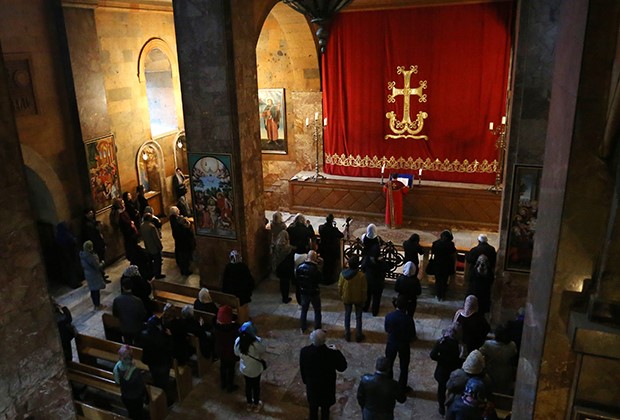
It is noteworthy that the main focus of the spread of infection in Armenia was the city of Etchmiadzin, where the main residence of the Catholicos of all Armenians Garegin II is located. In the same city, on March 8, 2020, an engagement ceremony was held, at which a woman who had recently returned from Italy, hiding her symptoms, infected the guests. Most of the residents of Armenia who were infected at that time became victims of the “Etchmiadzin aunt,” as she was called on social networks.
The church not only defiantly ignored the calls of the government, but also hinted that the secular authorities cannot dictate its will to the spiritual ones. The head of the press office of the Mother See of Etchmiadzin, Priest Vahram Melikyan, made a statement on Facebook where, although formally he agreed that the time is now dangerous, he made it clear that the church does not intend to completely close.
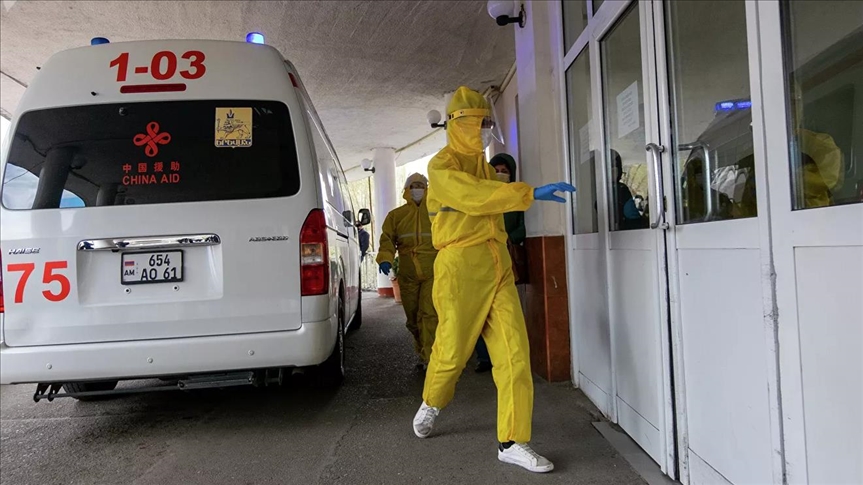
But be that as it may, in fact, due to their foreign policy predilections, the Armenian authorities neglected the issue of the spread of the virus and, against the background of the outbreak of the virus in Europe, did not follow the border, did not take separate sanitary measures, did not close entry for Europeans and did not cancel visa-free entry for them, etc.
According to the Armenian media, in the country, the majority were extremely frivolous about this virus and adhered to various conspiracy theories regarding the virus. This is instead of understanding that this virus is a threat. The authorities, for their part, were unable and did not show sufficient will to force the population to observe quarantine.
This is what it led to. Armenian experts, for example, calculated that the average daily mortality in May for 2013-2019 was 73 people, and in May 2020, an average of 9 people died from COVID daily. That is, the increase in mortality was already 12%, and it was growing. Specifically, on May 27, 2020, the average daily mortality was already exceeded by 20.5%.
And, perhaps, one must not forget that several factors influence mortality from coronavirus. One of the main questions is whether the person received medical assistance. A lot also depends on the quality of this assistance. The health care system in Armenia as a whole is still inefficient, poorly managed and unable to meet some of the basic health needs of the Armenian society. Due to misallocation of resources, weak state oversight, socio-economic imbalances and low funding, the Armenian health care system is struggling to meet its obligations.

In an article published in the International Journal for Equity in Health, complications and shortcomings in the Armenian healthcare system were due to the following reasons: in 60% of cases, these are financial barriers, in 40%, a lack of trust in medical workers, in 28%, the poor quality of diagnostic surveys, in 10% - the impact of the lack of modern equipment. Empirical data show that the quality of the Armenian healthcare system is associated with shortcomings within the country's system itself. An increase in medical equipment and medical workers will certainly not solve structural and systemic problems. If the quality is not improved, all other factors will suffer from insufficient efficiency. As the Commission on High Quality Health Systems noted in a landmark study by Lancelot Global Health, providing healthcare services without a minimum level of quality guarantee is inefficient, wasteful and unethical.
In addition, many countries form the statistics of deaths from coronavirus in different ways. As the Armenian media report, the authorities have a goal to register such cases less. This leads to the fact that deaths from coronavirus are “written off” as “the cause of death has not been established.”
So, the statements of the Armenian Ministry of Health that the statistics of the World Health Organization on excess mortality from coronavirus in the republic are exaggerated, they include deaths recorded as a result of the escalation of the conflict in Nagorno-Karabakh in the fall of 2020, and all this is very doubtful.




















